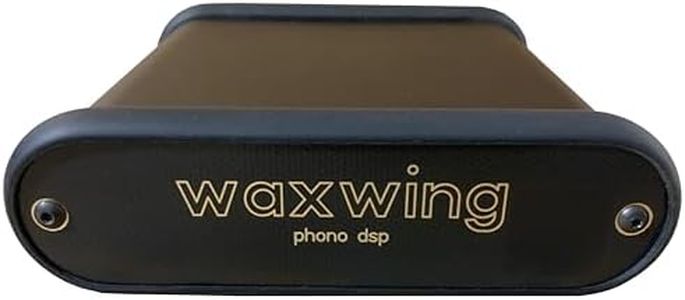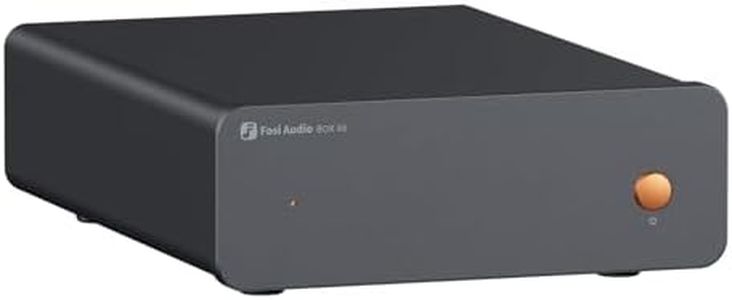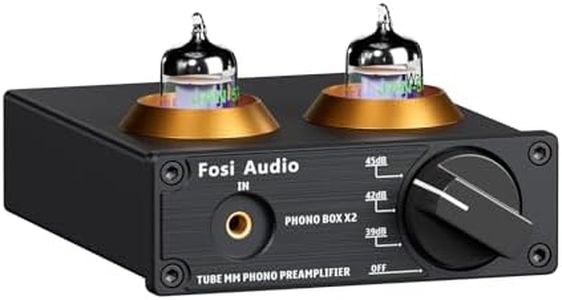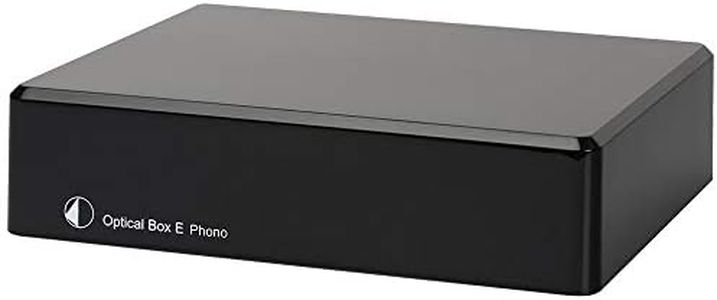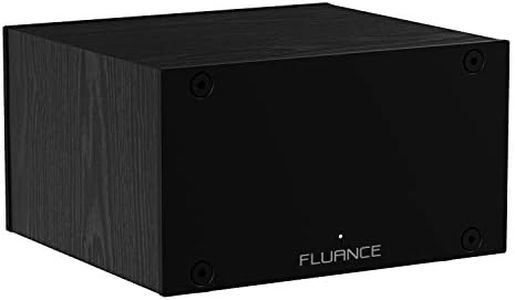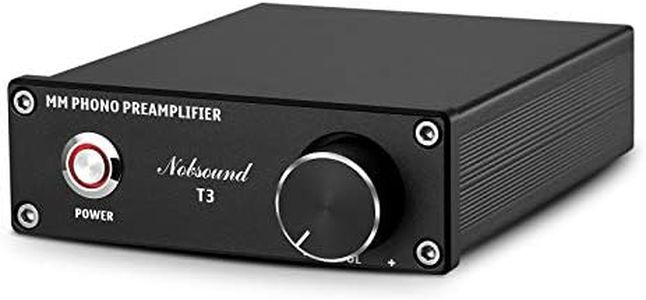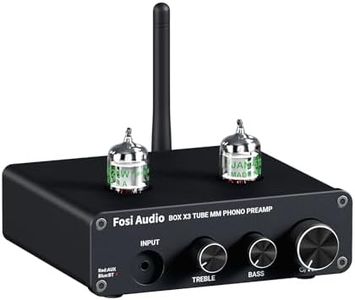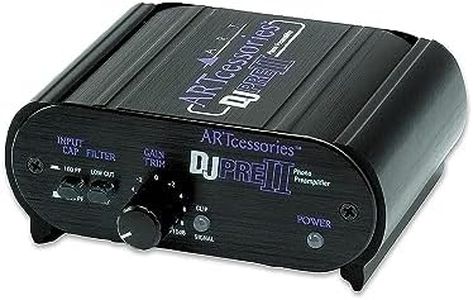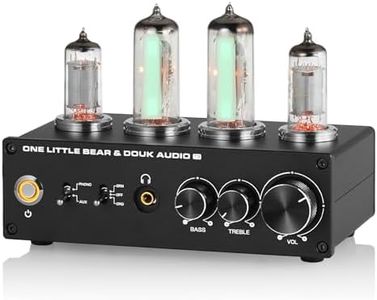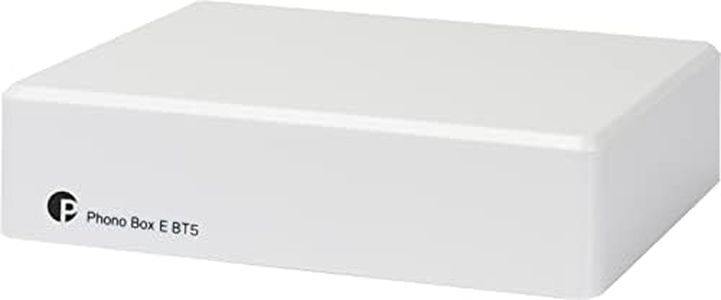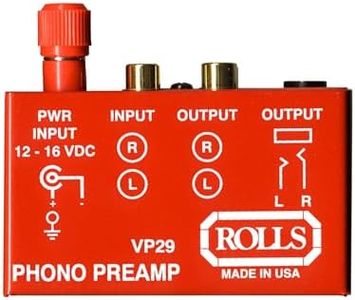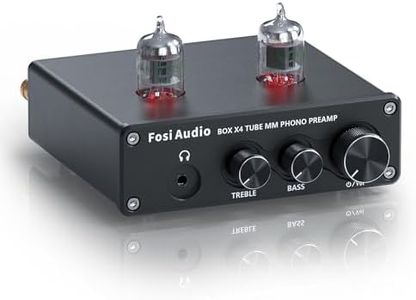We Use CookiesWe use cookies to enhance the security, performance,
functionality and for analytical and promotional activities. By continuing to browse this site you
are agreeing to our privacy policy
10 Best Phono Preamps
From leading brands and best sellers available on the web.Buying Guide for the Best Phono Preamps
Choosing a phono preamp (often called a phono stage) is an important step toward enjoying vinyl records with clear, full sound. The phono preamp’s job is to take the very faint signals coming from your turntable and boost them to a stronger level that speakers or amplifiers can use, while also applying the EQ correction (RIAA equalization) that records require. The right phono preamp can unlock the details and warmth in your record collection, but the 'best' one will always depend on how you listen, your gear, and your personal preferences. Understanding a few key features can help you pick a phono preamp that’s right for your system and listening style.GainGain refers to how much the phono preamp amplifies the signal from the turntable. It’s important because phono cartridges output very low signal levels, and boosting them to the right volume without distortion is key for good sound. Gain settings are usually divided into ranges: lower gain for Moving Magnet (MM) cartridges, which are more common and have higher output, and higher gain for Moving Coil (MC) cartridges, which are more sensitive and produce a lower signal. If you don’t know what cartridge you have, it’s important to check, or choose a preamp that offers gain adjustment. For casual listeners with typical MM cartridges, lower gain settings are usually perfectly fine; but if you use an MC cartridge or want flexibility, a preamp with adjustable gain is a good idea.
Cartridge Compatibility (MM/MC)Cartridge compatibility indicates whether the phono preamp can be used with Moving Magnet (MM), Moving Coil (MC), or both cartridge types. This is crucial because MM and MC cartridges differ in their electrical needs. MM is most common and works with many basic phono preamps. MC cartridges are used in higher-end turntables and require special preamps with higher gain and different electrical characteristics. Most beginners should look for a preamp that handles MM. If you ever plan to upgrade, picking a unit that supports both MM and MC will give you more options.
Input Impedance and CapacitanceInput impedance and capacitance affect how your phono preamp interacts with your cartridge, which can influence the clarity and tonal balance of your music. For MM cartridges, capacitance is more critical, while MC designs focus on impedance. Most casual listeners can use default or fixed settings, found in most basic preamps. More advanced users or those looking to fine-tune their sound may prefer adjustable settings, allowing them to match the preamp more precisely to their cartridge. If you love tinkering and have specific cartridges in mind, pick a preamp with adjustable options; otherwise, standard values work for most use cases.
Noise and Signal-to-Noise Ratio (SNR)Noise level, often shown as Signal-to-Noise Ratio (SNR), measures how much unwanted background noise is mixed in with your music. A higher SNR means cleaner sound. In practical terms, SNR above 80 dB is generally considered good for most home listening. If you plan to listen at higher volumes or you are sensitive to background hiss, look for higher SNR values. For casual listening, typical SNR specs should be sufficient and most users won’t notice background noise at reasonable volumes.
EQ Curve (RIAA Equalization)RIAA equalization is a standard curve applied by phono preamps to restore the sound of records back to natural. Almost all modern records and preamps use the RIAA curve, but some vintage records use different curves. If you only listen to standard records, any phono preamp with RIAA equalization will work well. If you have a collection of older or unusual records, you might want a preamp with selectable EQ curves.
Connectivity and Form FactorConnectivity refers to the input and output options on the phono preamp, such as RCA or balanced outputs. Most home users use RCA connections, which are widely compatible. The form factor — whether the preamp is a standalone box or designed to fit into a rack — matters if you have limited space or want an integrated look. Think about where you’ll put the preamp and what connections match your other gear before deciding.
